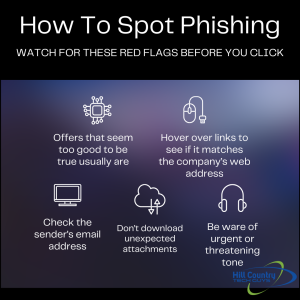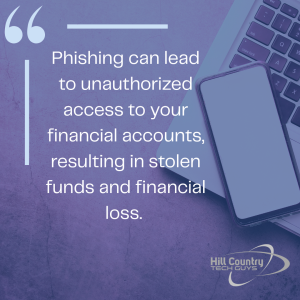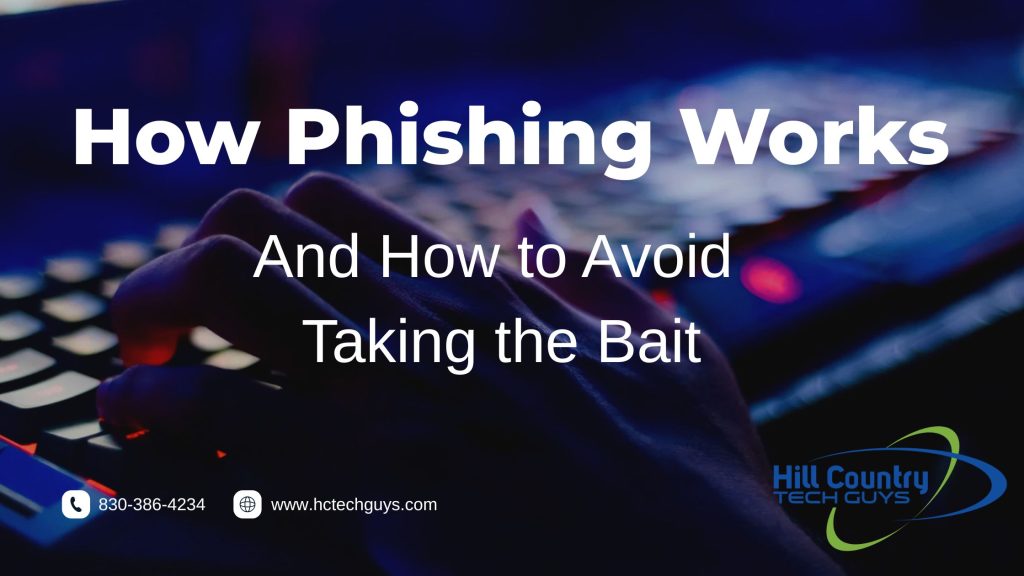Phishing is a term you might have heard about, especially in discussions around online security. But what exactly is phishing, and why should you care? Phishing is a type of cybercrime where attackers try to trick you into giving away personal information like passwords, credit card numbers, or social security numbers. They often pretend to be someone you trust, like your bank or a popular website.
What is Phishing?
Phishing is essentially a scam. It’s a way for criminals to steal your sensitive information by pretending to be a trustworthy source. These scams usually come in the form of emails, messages, or even phone calls that look legitimate but are actually fake. The goal is to lure you into clicking a link, downloading an attachment, or giving away your personal information.
How Phishing Works: Step by Step
 Phishing attacks can be sophisticated and convincing. Here’s a step-by-step look at how they typically work:
Phishing attacks can be sophisticated and convincing. Here’s a step-by-step look at how they typically work:
- The Setup: The attacker creates a fake website or email that looks just like a real one. This could be a copy of your bank’s login page or an email from a service you use, like Netflix or PayPal.
- The Bait: The attacker sends you an email or message with a sense of urgency. It might say your account has been compromised or that you need to update your information immediately.
- The Hook: When you click the link or open the attachment, you’re taken to the fake site or a malicious file is downloaded. The site will often ask you to log in or provide sensitive information.
- The Catch: Once you enter your information, it’s sent directly to the attacker. They now have access to your accounts and can cause serious harm, like stealing your identity or making unauthorized transactions.
How to Spot Phishing
Phishing attempts can be tricky to spot, but there are usually some telltale signs:
Check the Sender’s Email Address
Often, phishing emails will come from addresses that look like a legitimate company but have slight differences, like a missing letter or an added number. Always double-check the sender’s email address.
Look for Poor Grammar or Spelling
Legitimate companies usually proofread their communications, so emails or messages with lots of errors can be a red flag.
Watch for Urgency and Threats
Phishing emails often try to create a sense of urgency or fear. They might say your account will be locked or that you’ll lose access to something important if you don’t act quickly.
Hover Over Links
Before clicking any link, hover your mouse over it to see where it leads. If the URL looks suspicious or doesn’t match the company’s official website, don’t click it.
What to Do If You Think It’s Phishing
If you suspect you’ve received a phishing email or message, here’s what you should do:
Do Not Click on Links or Download Attachments
This is the most important step. Avoid clicking on any links or downloading attachments from suspicious emails or messages.
Verify the Source
Contact the company directly using a phone number or email address you know is legitimate. Do not use the contact information provided in the suspicious message.
Report the Phishing Attempt
Most email services have options to report phishing. Reporting these attempts helps prevent future attacks and keeps others safe.
Change Your Passwords
If you’ve clicked on a suspicious link or provided information, change your passwords immediately. Use strong, unique passwords for each of your accounts.
Monitor Your Accounts
Keep a close eye on your bank statements, credit card accounts, and any other accounts you suspect might be affected. Look for unauthorized transactions or changes.
Why Phishing Awareness is Important
Understanding phishing and being able to recognize it is crucial in today’s digital world. Phishing attacks are becoming more common and more sophisticated, making it essential for everyone to be aware and cautious.
Protecting Your Identity
Identity theft is a serious consequence of phishing. Once criminals have your personal information, they can open accounts in your name, rack up debt, and cause long-term damage to your credit.
Ensuring Financial Security
Phishing can lead to unauthorized access to your financial accounts, resulting in stolen funds and financial loss. Being aware of phishing tactics can help you protect your money and financial information.
Consequences for Businesses When Employees Get Phished
When employees fall victim to phishing attacks, the repercussions can be significant, impacting both the individual and the organization as a whole. Here are some of the key consequences businesses may face:
1. Financial Loss
Phishing attacks can lead to direct financial losses for companies, especially if sensitive banking information is compromised. Cybercriminals can gain access to company accounts, resulting in unauthorized transactions, fraud, and financial theft. Additionally, the costs associated with rectifying breaches, such as hiring cybersecurity experts and recovering lost funds, can be substantial.
2. Data Breach
A successful phishing attempt often leads to data breaches, exposing sensitive company information, employee data, and customer records. This can have serious implications, including legal consequences, regulatory fines, and damage to reputation. Companies may be required to notify affected individuals, which can further damage trust.
3. Operational Disruption
Phishing attacks can disrupt everyday business operations. If malware is introduced into the network through a phishing link, it can infect systems and require extensive downtime for remediation. This disruption can hinder productivity and lead to lost revenue.
4. Damage to Business Reputation
Trust is crucial in business, and a successful phishing attack can severely damage a company’s reputation. Clients, customers, and partners may lose confidence in a business that fails to protect its information. This loss of trust can lead to decreased customer retention and difficulty attracting new clients.
5. Increased Security Costs
In the wake of a phishing attack, businesses often need to invest heavily in improving security measures. This may include upgraded technology, enhanced security protocols, and employee training programs to prevent future incidents. While these investments are necessary for safeguarding the company, they can strain budgets.
6. Legal Liabilities
Depending on the nature of the data compromised, organizations may face legal liabilities. Clients or customers whose information has been breached could pursue legal action, resulting in costly lawsuits. Moreover, regulations like GDPR or HIPAA can impose hefty fines for failure to protect sensitive data.
7. Employee Morale
Experiencing a phishing attack can diminish employee morale. Employees may feel vulnerable if their information was compromised, leading to anxiety and decreased productivity. Furthermore, if personnel turnover increases as a result of decreased morale, companies can face additional training costs for new hires.
Real-World Example: When Phishing Gets Personal (and Costly)
Phishing isn’t just a theoretical threat, it’s something businesses have faced firsthand. Last summer, a business coaching and growth company reached out to Hill Country Tech Guys after their CEO was phished.
The attacker gained access through a convincing email and used that breach to further target the team. Just a few months later, another employee was phished. The result?
- Financial loss
- Wasted hours in response and damage control
- Anxiety and stress across the entire team
For a company built on reputation and trust, the stakes were especially high. Their business depended on client confidence, and this incident threatened to erode it.
After onboarding with Hill Country Tech Guys, they implemented a standard security stack and began security awareness training. Training included simulated phishing attacks to prepare their staff for future threats. Their systems and confidence are stronger now.
Phishing Hits Close to Home: The Texas Toll Scam
 Phishing is not something that only happens to “other people” or large corporations; it’s a real threat that affects people right here in Texas.
Phishing is not something that only happens to “other people” or large corporations; it’s a real threat that affects people right here in Texas.
In 2024 and 2025, Texas drivers found themselves the targets of a widespread phishing scheme that posed as TxDOT’s TxTag toll service. Victims received urgent text messages claiming they owed money for tolls, complete with a link to “pay now.” The catch? These messages were entirely fake, and the links directed unsuspecting individuals to scam websites crafted to steal sensitive personal and financial information.
This type of scam, commonly referred to as “smishing” (phishing via SMS), relies on tactics like urgency, threats of fines, and spoofed phone numbers to look legitimate. Many Texans clicked on these deceptive links before realizing they had fallen victim to a fraud.
Important Tip: TxDOT does not send text messages regarding final toll notices or outstanding balances. Any legitimate TxTag communications will come exclusively from the number 22498.
What This Teaches Us
- Phishing can occur through text messages and phone calls, not just emails.
- Scammers often impersonate trusted entities, including local governments and utility providers.
- Staying informed about current phishing tactics is crucial for safeguarding your personal information, your business, and your overall peace of mind.
By being aware of these scams and their tactics, you can better protect yourself and your loved ones from falling prey to phishing attempts.
The Takeaway
Whether you’re a 10-person business or a national corporation, phishing is a threat that’s all too real. The good news? With the right tools, training, and strategy, you can reduce your risk and bounce back stronger.
At Hill Country Tech Guys, we help businesses of all sizes build real, defensible layers from technical defenses to employee awareness. Because cybersecurity isn’t just about technology, it’s about people.




